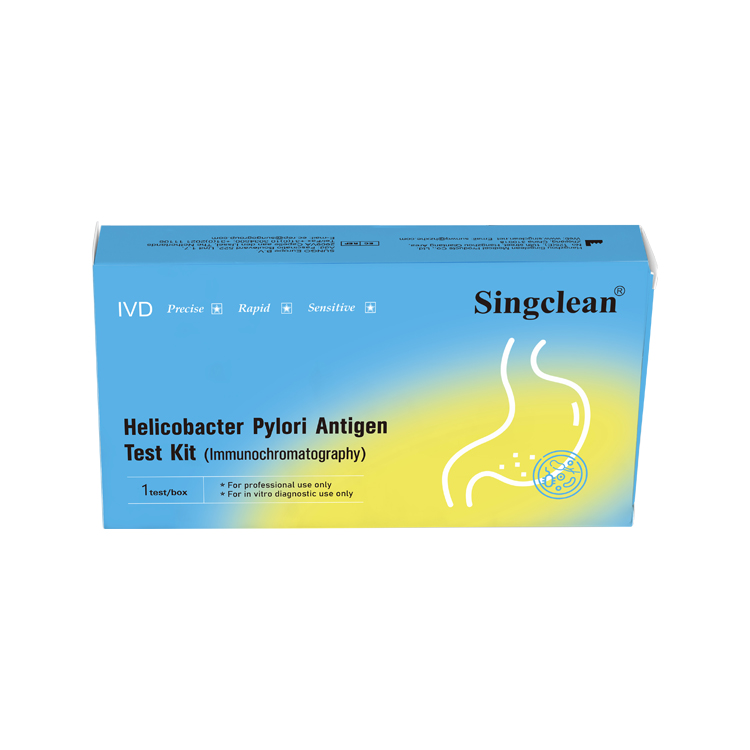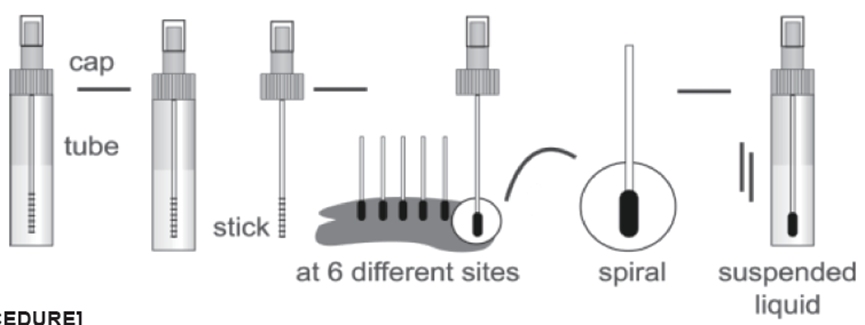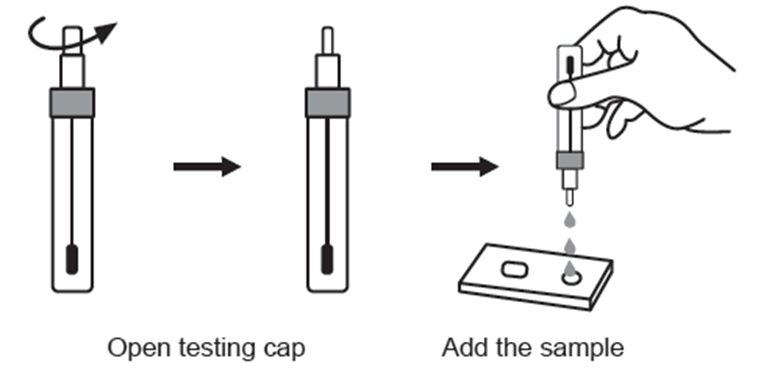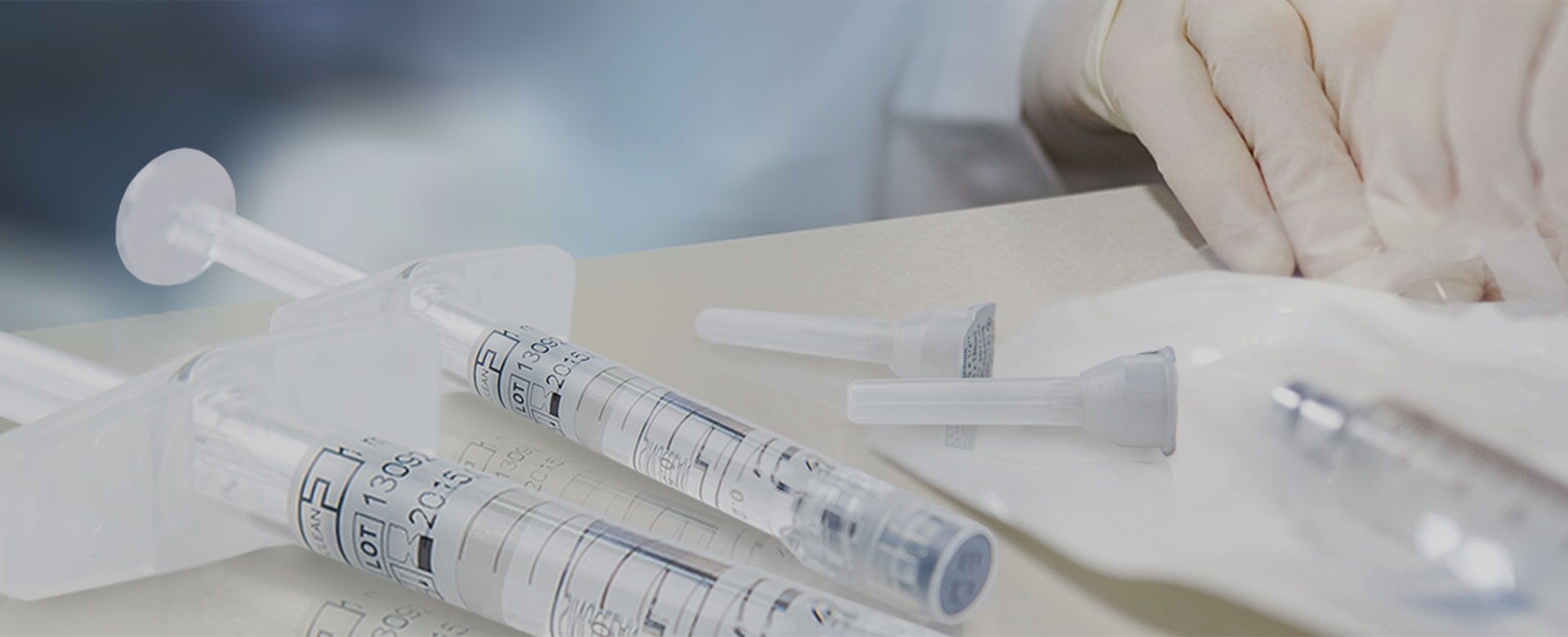
Helicobacter Pylori Antigen Test Kit
(Immunochromatography)
•Instructions For Use •For professional use only •For in vitro diagnostic use only
Please read this IFU carefully before use!
CE
[INTENDED USE]
Helicobacter Pylori Antigen Test Kit (Immunochromatography) is a rapid chromatographic immunoassay for the qualitative determination of helicobacter pylori antigen in human feces. It is used for the aid to diagnosis of Helicobacter pylori infection.
[INTRODUCTION]
Helicobacter pylori (Hp) is gram-negative aerobic bacteria in small amounts residing in the stomach and duodenum. Hp infection is seen widespread in over 50% of population around the globe presumably via oral transmission. HP infection is an infectious disease that can cause chronic gastritis and peptic ulcer. Common symptoms include upper stomach discomfort and pain, flatulence, anorexia, nausea, vomiting, as well as dark or tar-colored stool, of which 70% of patients bear no various symptom. Hp is the main cause of gastritis and peptic ulcer, and is closely related to functional dyspepsia, MALT lymphoma, and gastric cancer. The WHO International Agency for Research on Cancer (IARC) has included Hp under Class I carcinogens. Eradication of Hp can significantly reduce the risk of gastric and duodenal diseases, including gastric cancer, and can decrease new Hp infections in the future. Currently, the standard adopted for Hp detection is bacterial isolation and culture technology, but it is hard to be popularized because of its demanding experimental conditions and technical requirements. In contrast, Helicobacter Pylori Antigen Test Kit (Immunochromatography) needs no costly equipment and is characterized by convenient operation procedures and interpretation of results, good sensitivity and specificity, which makes it increasingly popular.
[PRINCIPLE]
Helicobacter Pylori Antigen Test Kit (Immunochromatography) employs double antibody sandwich method to detect Hp antigen in human feces.
This reagent contains Hp antibodies that are fixed to the test zone (T) on the membrane. Treat the human stool specimen prior to the test. If the specimen to be tested contains Hp, a red reaction line will appear in Zone T, vice versa. Whether there is Hp in the specimen to be tested, a red reaction line will always appear in the control zone (C); the red reaction line shown in Zone C is used as criterion for judging whether there are enough specimens and whether the chromatography process is normal.
[MATERIALS PROVIDED]
Test Cassette
Sample collection tube with extraction buffer
Instructions for use
[MATERIALS REQUIRED BUT NOT PROVIDED]
Timer
Disposable specimen container
[STORAGE AND STABILITY]
● Store in the sealed pouch at 4°C to 30°C. The validity period is 24 months.
● The test is stable through the expiration date printed on the sealed pouch.
● The test must remain in the sealed pouch until use.
● After opening the sealed pouch, use the test as soon as possible within 60 minutes.
● Do not freeze.
● Do not use beyond the expiration date.
[SPECIMEN COLLECTION AND STORAGE]
Specimen collection
1) Remove cap and stick from the tube. Poke the stick into the feces sample (approximately 8~20mg) six times at different sites.
2) Put the stick back in the tube, tighten the cap and shake well.
Note: Handle all the specimens for testing as if potentially infectious.
Specimen should be collected fresh feces, not mixed with urine, disinfectant and sewage.
Specimen storage
1) Fresh feces specimen must be collected in a clean and dry container.
2) Perform the testing immediately after the specimen collection. Do not leave the specimens at room temperature for prolonged periods. Specimens may be stored at 2-8°C for up to 24 hours. For long term storage, specimens should be kept below -20°C.
3) Place specimens to room temperature prior to testing. Frozen specimens should be thawed and mixed well before testing.
Avoid repeated freezing and thawing of specimens. For best results, test specimens immediately following collection.

[TEST PROCEDURE]
1) Shake well the Sample collection tube with feces specimen;
2) Open pouch and place test device on a flat surface;
3) Open the tip cover of the sample collection tube and squeeze tube to dispense 3 drops (about 100μL) into sample well. Read result at 15 minutes. Do not interpret result after 20 minutes.

[INTERPRETATION OF RESULTS]

[LIMITATIONS]
1.Helicobacter Pylori Antigen Test Kit is a valuable aid in the early detection of Hp affection. However, this reagent, which is designed for qualitative detection, cannot indicate the level of human Hp antigen in the sample.
2.Test results of this reagent are for reference use only and shall not be used as the sole basis for clinical diagnosis and treatment. The clinical management of patients shall be comprehensively considered by the physician in combination with their symptoms, signs, medical history, other laboratory examinations, and treatment reactions.
3.Negative results do not exclude the possibility of Hp infection. This may be attributed to Hp antigen concentration in the sample being lower than LOD of this product.
[PERFORMANCE CHARACTERISTICS]
1.Limit of detection
The limit of detection is 3×104 CFU/mL.
2.Cross reactivity
In the analytical specificity test, negative sample and low positive sample were used to test by adding the following solutions of 1×107 CFU/mL concentration list below. The results showed no significant cross-reactivity with this reagent.

3.Interfering substrate
The following potentially interfering substances were added to Hp negative and positive specimens, which did not interfered the test result.

[WARNINGS AND PRECAUTIONS]
1.For in vitro diagnostic use only.
2.For professional use only.
3.Do not use if pouch is damaged or opened.
4.Do not touch the membrane located within the windows.
5.Once open the pouch, the test device should be used immediately. Prolonged exposure to humid ambient will cause
product deterioration.
6.Ensure that an appropriate number of samples are used in the testing. Too many or too few samples may cause bias in results.
7.Components in different batches of reagents cannot be replaced to avoid erroneous results.
8.Since visual inspection is employed for this product, to ensure accurate results, do not read in dim light.
9.Treat feces samples and used devices as if they are potentially infectious. Avoid contact with skin.
10.This disposable kit should be used within the validity period.




